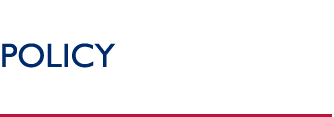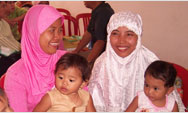Mission and Organizational Structure
MISSION STATEMENT
To serve as the U.S. government’s primary instrument for human advancement in promoting security and reducing poverty in the developing world—by catalyzing the full range of America’s public and private capabilities and resources, and linking those resources effectively with the governments and people
we serve, through world-class, on-the-ground presence.
VALUES
Loyalty: Commitment to the United States and the American people.
Character: Maintenance of the highest ethical standards and integrity.
Service: Excellence in the formulation of policy and management with room for
creative dissent. Implementation of policy and management practices, regardless of personal views.
Accountability: Responsibility for meeting the highest performance standards.
Community: Dedication to teamwork, professionalism, and the customer perspective.
Diversity: Commitment to having a workforce that represents the diversity of America.
USAID HISTORY
The Foreign Assistance Act of 1961 effectively reorganized U.S. government foreign assistance programs, including the separation of military and non-military aid. The act placed primary emphasis on long-range economic and social development assistance efforts and mandated the creation of an agency to administer programs in support of these efforts. Two months after passage of the act, President John F. Kennedy established USAID.
USAID unified pre-existing U.S. government assistance programs, combining the economic and technical assistance operations of the International Cooperation Agency, the loan activities of the Development Loan Fund, the local currency functions of the Export-Import Bank, and the agricultural surplus distribution activities of the Food for Peace program of the U.S. Department of Agriculture (USDA).
USAID has undergone a number of restructurings over the years to improve its performance, but the foreign assistance reforms announced by Secretary of State Condoleezza Rice in January 2006 reflect major changes in the way that the Agency will plan and execute its programs. With implementation commencing in FY 2007, the reforms will more fully align foreign assistance activities carried out by USAID and the Department of State. They will bring USAID into the 21st century and increase its capacity to be the leader in the development field.
OUR ORGANIZATION
Organizational Structure in Washington, D.C.
As part of the foreign assistance reforms announced in January 2006, Secretary Rice created the Office of the Director of U.S. Foreign Assistance within the Department of State (State/F). The Director of this Office, Henrietta Fore, serves concurrently as the USAID Administrator. The Director of U.S. Foreign Assistance (DFA) has authority over USAID and Department of State foreign assistance funding and programs, bringing together various bureaus and offices within the two agencies to participate in joint program planning, implementation, and oversight. To facilitate this consolidation of policies and procedures, staff from USAID’s former Bureau for Policy and Program Coordination (PPC) were first deployed to State/F. The Bureau for Foreign Assistance has been created to house the USAID employees now working in State/F. An Office of the Chief Operating Officer (COO), within the USAID Administrator’s Office, has been created to improve organizational management. Additionally, a new program office, the Office of Management Policy, Budget and Performance in the Management Bureau has been established.
The Office of Development Partners was created to combine several functions from other offices and the Office of Human Resources (HR) was removed from the Bureau of Management and established as an independent office to provide a direct link from the Chief Human Capital Officer (CHCO) to the Administrator. USAID’s mission is carried out through four regional bureaus in Washington: Africa (AFR), Asia and the Near East (ANE), Latin America and the Caribbean (LAC), and Europe and Eurasia (E&E). The regional bureaus are supported by three functional or pillar bureaus: the Bureau for Democracy (DCHA), which provides expertise in democracy and governance, conflict management and mitigation, and humanitarian assistance; the Bureau for Economic Growth, Agriculture, and Trade (EGAT), which provides expertise in economic growth, trade opportunities, agricultural productivity and technology, and education; and the Bureau for Global Health (GH), which provides expertise in global health challenges, such as maternal and child health and HIV/AIDS.
USAID’s Bureau for Management administers a centralized support services program for the Agency’s worldwide operations. The Bureau for Legislative and Public Affairs develops and implements outreach programs to promote understanding of USAID’s missions and programs. USAID also includes seven other independent offices that support the Administrator’s Office and the Agency’s security, small and disadvantaged business, compliance, regulatory, and diversity programs.
Organizational Structure Overseas
USAID implements programs in 88 countries overseas and its organizational units are known as “field missions.” The U.S. Ambassador serves as the Chief of Mission for all U.S. government agencies in a given country and the USAID Director reports to the Ambassador. The USAID Director or Representative is responsible for USAID’s operations in a given country or region and also serves as a key member of the U.S. government’s “country team.” The Director or Representative is often called upon to stand in for the Ambassador or the Deputy Chief of Mission during their absences.
USAID missions operate under decentralized program authorities, allowing them to design and implement programs and negotiate and execute agreements. The Director of USAID’s Office of Acquisitions and Assistance issues warrants to field-based contracting officers, authorizing them to negotiate, execute, amend, and modify contracts, grants, and cooperative agreements. Mission directors and principal officers are also delegated authority to:
- coordinate with other U.S. government agencies
- waive source, origin, and nationality requirements for procurement of goods and services
- negotiate, execute, and implement food aid agreements
- implement grant, loan, and credit programs.
Full USAID missions usually consist of nine to 15 U.S. direct-hire (USDH) employees (with a few full missions having more than 15). These missions conduct USAID’s major programs worldwide, managing a program of four or more strategic goals on average.
Medium-sized missions (five to eight USDH) manage programs of two to three goals, and small missions (three to four USDH) manage one or two strategic goals. These missions provide assistance based on an integrated strategy that includes clearly defined program objectives and performance targets.
Full-support missions (typically 16 to 22 USDH), also known as regional hubs, provide a variety of services. The hubs retain a team of legal advisors, contracting and project design officers, financial services managers, and sometimes technical officers to support small and medium-sized missions and non-presence countries which receive USAID funding. In countries without integrated strategies but where aid is necessary, full-support missions work with non-governmental organizations (NGO) or other partner organizations to facilitate the emergence of civil society, help alleviate repression, meet basic human needs, mitigate conflict, and/or enhance food security. These missions may also have their own bilateral programs to manage.
The field mission workforce is typically composed of three major categories of personnel: USDH employees (including program-funded foreign service limited [FSL] appointments), U.S. personal services contractors (USPSC), and foreign service nationals (FSN). USDHs are career foreign service employees assigned to missions for two to four-year tours. Program-funded FSLs are hired under a special authority granted by Congress to replace contracted personnel, such as USPSCs. USPSCs are contractors hired for up to five years to carry out a scope of work specified by USAID. FSNs, professionals recruited in their host countries by USAID, make up the core of the USAID workforce. Many FSNs are recognized leaders and experts in their fields and devote their careers to USAID. FSNs are the bridge to effective contacts with key host country officials and decisionmakers, and they provide the institutional memory for and continuity of USAID’s country programs. They are the backbone of USAID’s overseas workforce.
USAID also stations officers where opportunities exist to leverage policy and resources in support of high priority strategic issues; the Agency currently has officers stationed in Paris, Tokyo, Brussels, Geneva, and Rome.
USAID’S People
USAID’s workforce consists of just less than 8,000 employees in the foreign service and civil service, as well as FSNs and those in other categories, including employees detailed from other U.S. government agencies, personal service contractors, and Fellows. As the chart below indicates, FSNs make up just under 60 percent of USAID’s workforce. Approximately 76 percent of the total USAID workforce serves overseas.
Back to Top ^ | < Previous Page | Next Page >
|


